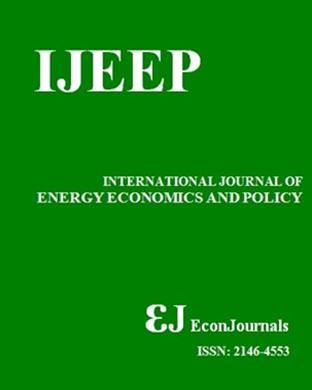From Energy Diversity to Environmental Resilience: The Role of Government Efficiency in Shaping Ecological Footprint in Bangladesh
DOI:
https://doi.org/10.32479/ijeep.18955Keywords:
Energy Use, Government Effectiveness, Ecological Footprint, ARDL, BangladeshAbstract
Given the significance of governmental stability, energy usage, and economic development in improving ecosystem health, it is essential to analyze the interrelationship among rise in GDP, energy dynamics, government effectiveness, and ecological footprint (EF). This study utilized Bangladesh's annual data from 1995–2021. The investigation applied the ADF, PP, and DF-GLS unit root tests to assure the existence of unit root issues in the dataset. The ARDL bound testing methodology was utilized to explore the effect of independent factors on the EF in both short and long-term. The outcomes reveal that GDP expansion substantially elevates EF in both the short term and the long term. Conversely, both government effectiveness and the consumption of sustainable power show a significant negative correlation with EF over both time periods, suggesting that these factors positively influence the health of the ecosystem. Furthermore, the use of non-renewable energy and urbanization show a positive connection with EF in both time periods, highlighting their significant influence on ecological condition in Bangladesh. The ARDL model's validity was affirmed via FMOLS, DOLS, and CCR estimate methods. The analysis advocates for the implementation of legal rules to facilitate a green environment, enhance the use of clear electricity, promote stable governance, and higher funds in sustainable energy to minimize pollutants and attain sustainability in Bangladesh.Downloads
Downloads
Published
2025-06-25
How to Cite
Bala, S., Ulfat, T. J., Hossain, H., Al Absy, M. S. M., Ridwan, M., Ridzuan, A. R., & K.P., J. M. (2025). From Energy Diversity to Environmental Resilience: The Role of Government Efficiency in Shaping Ecological Footprint in Bangladesh. International Journal of Energy Economics and Policy, 15(4), 189–203. https://doi.org/10.32479/ijeep.18955
Issue
Section
Articles




